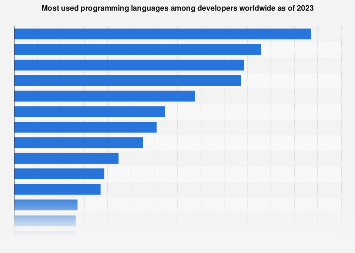So, you’re curious about which language is predominantly used in the realm of software development? Well, if you’ve found yourself pondering this question, you’re not alone. With the ever-evolving landscape of technology and the multitude of programming languages available, it can be quite a task to determine which one takes the crown. From the dominance of established players like Java and C++ to the rising popularity of Python and JavaScript, the options are abundant and varied. Join us as we navigate the intricate world of software development and shed light on the language that reigns supreme in this constantly evolving field.
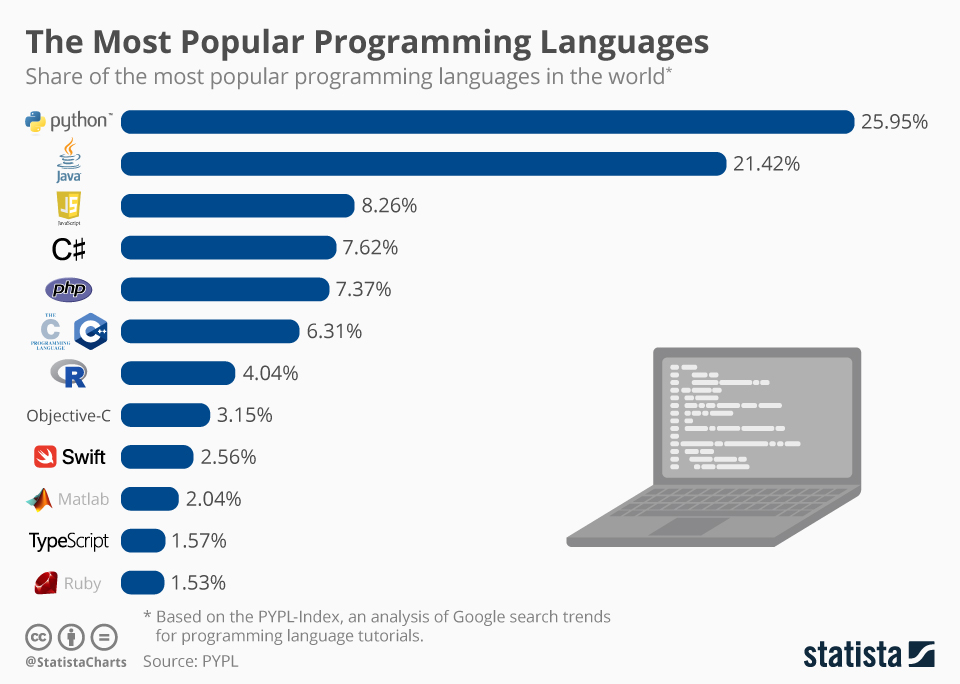
This image is property of cdn.statcdn.com.
1. Introduction
When it comes to software development, choosing the right programming language is crucial. The language you choose will have a significant impact on the overall performance, maintainability, and scalability of your software. With so many programming languages to choose from, it can be overwhelming to make a decision. In this article, we will explore some of the most popular programming languages used in software development and discuss the factors that influence language choice. By the end of this article, you will have a better understanding of which language might be the best fit for your software development projects.
2. Popular Programming Languages
There are numerous programming languages available today, each with its own strengths and weaknesses. However, some languages have gained immense popularity in the software development community. Let’s take a look at some of the most popular programming languages:
2.1 JavaScript
JavaScript is a versatile programming language that is primarily used for creating interactive elements on websites. It allows developers to add dynamic behavior to web pages, making them more user-friendly and engaging. JavaScript runs on the client-side and is supported by all major web browsers. Its popularity among developers has grown tremendously due to the rise of frameworks such as React and Angular, which are built on top of JavaScript.
2.2 Python
Python is a high-level, interpreted programming language known for its simplicity and readability. It has a wide range of applications, from web development to data analysis and machine learning. Python’s syntax is easy to understand, making it a great learning language for beginners. It also has a vast ecosystem of libraries and frameworks that simplify development and boost productivity.
2.3 Java
Java is a general-purpose programming language widely used in enterprise software development. It is known for its “write once, run anywhere” motto, which means that Java code can be executed on any platform that supports Java without the need for recompilation. Java is often used for building large-scale applications and has a strong focus on performance and security.
2.4 C++
C++ is a powerful programming language that offers a great deal of control over hardware resources. It is widely used in system programming, game development, and other performance-critical applications. C++ allows developers to write high-performance code and is often seen as the language of choice for software that requires low-level access to hardware.
2.5 C#
C# (pronounced C-sharp) is a modern, object-oriented programming language developed by Microsoft. It is primarily used for developing Windows applications and is often the language of choice for building desktop and enterprise software. C# has a strong resemblance to Java and shares many of the same principles, making it relatively easy to learn if you already have experience with Java or C++.
2.6 PHP
PHP is a server-side scripting language primarily used for web development. It is known for its simplicity and ease of use, making it a popular choice among beginners and small businesses. PHP powers a large portion of the web, including popular content management systems like WordPress. It also has a vast selection of frameworks and libraries that simplify development and enhance functionality.
2.7 Swift
Swift is a relatively new programming language developed by Apple for iOS, macOS, watchOS, and tvOS development. It has gained popularity among developers due to its modern syntax, performance, and safety features. Swift is known for its easy-to-read code and powerful debugging capabilities. It has become the preferred language for building native iOS applications and is gaining traction in the macOS development community as well.
2.8 Ruby
Ruby is a dynamic, object-oriented programming language known for its simplicity and elegance. It has a strong focus on developer productivity and has gained popularity through frameworks like Ruby on Rails, which simplifies web development. Ruby’s readable syntax and extensive library ecosystem make it an excellent choice for building web applications quickly.
2.9 Go
Go, also known as Golang, is a statically typed, compiled programming language developed by Google. It combines the performance of a compiled language with the simplicity and ease of use of languages like Python and JavaScript. Go is known for its efficient concurrency support and robust standard library, making it a popular choice for building concurrent and scalable systems.
2.10 TypeScript
TypeScript is a superset of JavaScript that adds static typing to the language. It is designed for larger-scale JavaScript applications, where static typing can improve code maintainability and reduce bugs. TypeScript compiles down to plain JavaScript and is widely adopted by developers working on large-scale JavaScript projects.
3. Factors Influencing Language Choice
When it comes to choosing a programming language for your software development project, several factors should be taken into consideration. Let’s explore some of the key factors that can influence your language choice:
3.1 Purpose of the Software
The purpose of the software you are developing plays a significant role in the choice of programming language. Different languages excel in different domains. For example, if you are building a web application, JavaScript and Python might be suitable choices. On the other hand, if you are developing a mobile application for iOS, Swift is the obvious choice. Consider the requirements and constraints of your project to determine the most appropriate language.
3.2 Performance Requirements
If your software has strict performance requirements, such as real-time data processing or resource-intensive calculations, choosing a language with high-performance capabilities is essential. Languages like C++ and C are known for their efficiency and low-level access to hardware resources. However, it’s important to note that modern interpreted languages like Python and JavaScript have made significant performance improvements over the years and might be suitable for certain performance-critical applications.
3.3 Community Support
The strength and support of a programming language’s community can greatly impact the ease of development and availability of resources. A thriving community ensures continuous improvement and provides access to libraries, frameworks, and online forums for help and collaboration. Popular languages like JavaScript and Python have large and active communities, making it easier to find support and leverage existing code.
3.4 Learning Curve
Consider the learning curve associated with a particular programming language. Some languages, like Python and JavaScript, have a gentle learning curve and are considered beginner-friendly. Others, like C++ and Java, have steeper learning curves and require a deeper understanding of programming concepts. If you are a beginner or have time constraints, it may be beneficial to choose a language that is easier to learn to speed up your development process.
3.5 Availability of Libraries and Frameworks
The availability of libraries and frameworks can greatly impact the speed and efficiency of software development. Popular languages like Python and JavaScript have extensive ecosystems of libraries and frameworks that can simplify development and provide ready-made solutions to common problems. Consider the availability of third-party libraries and frameworks that align with your project requirements to minimize development time and effort.
3.6 Job Market Demand
If you are learning a programming language with the aim of getting a job in the software development industry, it’s important to consider the job market demand for that language. Some languages, like JavaScript and Python, have high demand and a wide range of job opportunities. Others, like Go or Swift, might have fewer job openings but offer unique opportunities in certain industries. Research the job market demand for the language you are considering to ensure future career prospects.
3.7 Maintenance and Scalability
The long-term maintenance and scalability of your software should be taken into account when choosing a programming language. Consider factors such as the availability of skilled developers and the ease of maintaining and scaling your software in the chosen language. Languages like Java and C# are often chosen for enterprise-scale applications due to their mature ecosystems and proven track records of long-term support.
4. JavaScript
4.1 Overview
JavaScript is a versatile programming language that was initially developed as a scripting language for web browsers. Over the years, it has evolved and become widely used for both client-side and server-side development. JavaScript can run on all major web browsers and has become the de facto language for web development.
4.2 Advantages
JavaScript offers several advantages that make it a popular choice among developers:
- Ubiquity: JavaScript runs on all major web browsers, making it accessible to a wide audience.
- Interactivity: JavaScript allows developers to add dynamic behavior to web pages, creating interactive and engaging user experiences.
- Large Community and Ecosystem: JavaScript has a vast and active community, which means there are plenty of resources, libraries, and frameworks available for developers to leverage.
- Versatility: JavaScript can be used on both the client-side and server-side, allowing developers to build full-stack applications with a single language.
4.3 Disadvantages
Despite its popularity, JavaScript has a few disadvantages that developers should be aware of:
- Browser Compatibility: JavaScript code can behave differently across different web browsers, requiring additional effort to ensure consistent behavior.
- Lack of Strong Typing: JavaScript is a dynamically typed language, which means it lacks the strict type-checking found in statically typed languages. This can sometimes lead to hard-to-find bugs and reduce code maintainability.
- Security Concerns: JavaScript is inherently a client-side language, and executing code on the client can introduce security vulnerabilities if not handled carefully.
4.4 Use Cases
JavaScript is primarily used for web development. It is used to create dynamic and interactive user interfaces, implement client-side validations, and handle asynchronous interactions. JavaScript can also be used on the server-side with the help of popular frameworks like Node.js. With the rise of frameworks like React and Angular, JavaScript is often the language of choice for building single-page applications.
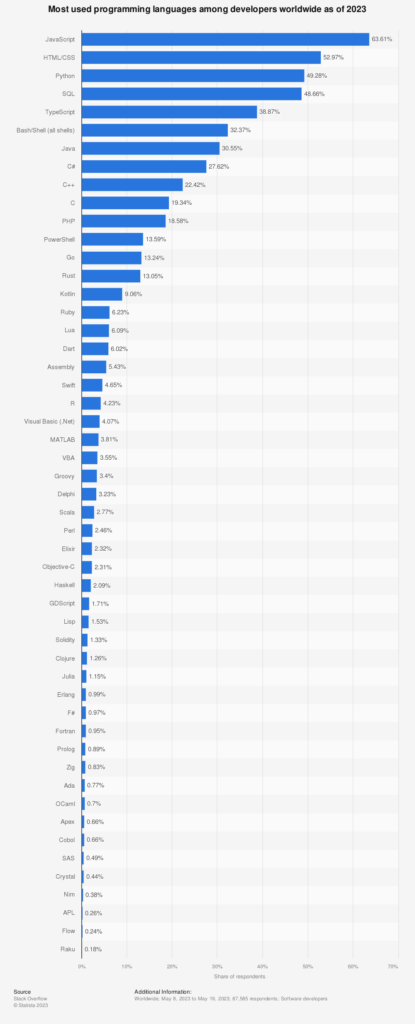
This image is property of www.statista.com.
5. Python
5.1 Overview
Python is a high-level, interpreted programming language that focuses on simplicity and readability. It was designed to be easy to understand and write, making it a great language for beginners. Python’s straightforward syntax and extensive ecosystem of libraries and frameworks have made it a popular language across various domains.
5.2 Advantages
Python offers several advantages that make it a popular choice among developers:
- Readability: Python code is easy to read and understand, making it a great language for collaboration and maintenance.
- Large Ecosystem: Python has a vast collection of libraries and frameworks that enable developers to build complex applications quickly.
- Versatility: Python can be used for a wide range of applications, from web development to data analysis, machine learning, and scientific computing.
- Beginner-Friendly: Python’s easy syntax and focus on readability make it an excellent choice for beginners and those new to programming.
5.3 Disadvantages
Despite its advantages, Python has a few limitations that developers should consider:
- Performance: Compared to lower-level languages like C++ or Java, Python can be slower due to its interpretation process. However, Python’s extensive library ecosystem often mitigates this issue by allowing developers to write performance-critical code in other languages and integrate it seamlessly with Python.
- Global Interpreter Lock (GIL): Python has a Global Interpreter Lock, which can limit its ability to utilize multiple processor cores efficiently. Although this can impact performance for CPU-bound applications, it may not be a significant concern for IO-bound applications.
5.4 Use Cases
Python has a wide range of applications, making it a versatile language for different use cases:
- Web Development: Python has frameworks like Django and Flask, which simplify web development and provide powerful features for building scalable web applications.
- Data Analysis and Science: Python’s ecosystem includes libraries like NumPy, Pandas, and SciPy, which make it a popular choice for data analysis, machine learning, and scientific computing.
- Scripting: Python’s ease of use makes it a great language for writing scripts to automate various tasks and generate reports.
- Prototyping: Python’s simplicity and readability make it an excellent choice for rapidly prototyping ideas and concepts.
6. Java
6.1 Overview
Java is a general-purpose, class-based object-oriented programming language that was designed to have as few implementation dependencies as possible. It is widely used for building large-scale enterprise applications, Android development, and other performance-critical software.
6.2 Advantages
Java offers several advantages that make it a popular choice among developers:
- Platform Independence: Java code can run on any system that has a Java Virtual Machine (JVM), making it highly portable and platform-independent.
- Performance and Reliability: Java is known for its high performance and reliability, making it a suitable choice for large-scale applications.
- Rich Ecosystem: Java has a large ecosystem of libraries, frameworks, and tools that simplify development and enhance productivity.
- Strong Community Support: Java has a strong and active community that provides continuous support, resources, and updates to the language.
6.3 Disadvantages
While Java has many benefits, it also has some drawbacks:
- Verbosity: Java’s syntax can be verbose, requiring more lines of code compared to languages like Python or JavaScript. This can increase development time and effort.
- Learning Curve: Java has a steeper learning curve compared to beginner-friendly languages like Python. It requires a good understanding of object-oriented programming concepts.
- Memory Consumption: Java applications can consume a significant amount of memory due to the JVM overhead, which can be a concern for resource-constrained environments.
6.4 Use Cases
Java is often used for building large-scale enterprise applications, Android applications, and performance-critical software:
- Enterprise Applications: Java’s platform independence and performance make it a suitable choice for building complex enterprise applications.
- Android Development: Java is the primary language for developing Android applications, making it a must-know language for Android developers.
- Performance-Critical Software: Java’s performance and reliability make it a popular choice for software that requires high performance, such as financial applications, content management systems, and big data solutions.
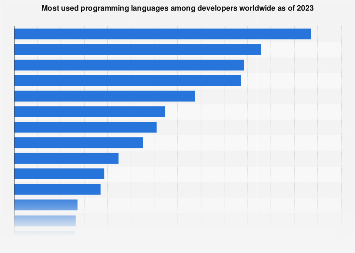
This image is property of cdn.statcdn.com.
7. C++
7.1 Overview
C++ is a general-purpose programming language that builds on the syntax and features of the C programming language. It offers several powerful features, including low-level access to memory, object-oriented programming, and generic programming.
7.2 Advantages
C++ offers several advantages that make it a powerful choice for certain applications:
- Performance: C++ allows developers to write high-performance code by providing low-level access to memory and hardware resources.
- Control: C++ provides fine-grained control over memory management, allowing developers to optimize resource usage for performance-critical applications.
- Compatibility: C++ code can seamlessly integrate with existing C code, making it a suitable choice for projects that require compatibility with legacy codebases.
- Community and Libraries: C++ has a large and active community that contributes to the development of libraries and frameworks, providing a rich ecosystem for developers.
7.3 Disadvantages
While powerful, C++ has certain drawbacks that developers should be aware of:
- Complexity: C++ has a steep learning curve and can be more challenging to grasp compared to higher-level languages like Python or Java.
- Memory Management: C++ does not have a built-in garbage collector, requiring developers to manually manage memory allocation and deallocation. This can introduce memory leaks and other memory-related bugs if not handled carefully.
- Verbosity: Like Java, C++ can be verbose, requiring more lines of code to accomplish certain tasks compared to languages like Python or JavaScript.
7.4 Use Cases
C++ is often used in the following use cases:
- Systems Programming: C++ is widely used in system programming, where low-level access to memory and hardware resources is crucial.
- Game Development: C++ is a popular choice for game development due to its performance and ability to work closely with hardware.
- Embedded Systems: C++ is often used in embedded systems programming, where resource efficiency and control are essential.
- High-Performance Computing: C++ is a popular language for writing performance-critical applications that require efficient use of system resources.
8. C#
8.1 Overview
C# (pronounced C-sharp) is an object-oriented programming language developed by Microsoft. It combines the power and productivity of C++ with the simplicity and ease of use of languages like Python and Java.
8.2 Advantages
C# offers several advantages that make it a popular choice for Windows-based development:
- Familiarity: If you have experience with Java or C++, learning C# is relatively easy, as it shares many syntax and language features.
- Integration with .NET Framework: C# is deeply integrated with the .NET Framework, making it a powerful language for building Windows applications.
- Productivity: C# offers features like automatic memory management and a rich class library, which boosts developer productivity and reduces the chance of memory-related bugs.
- Windows Development: C# is widely used for developing Windows applications and has excellent support for GUI-based development using tools like Windows Presentation Foundation (WPF) and Universal Windows Platform (UWP).
8.3 Disadvantages
While widely used, C# has a few disadvantages that developers should consider:
- Platform Dependence: C# is primarily used for Windows development, which limits its portability and compatibility with other platforms.
- Limited Community and Ecosystem: While the C# community is strong, it may not be as extensive as those of other languages like Python or JavaScript.
- Learning Curve: While C# is generally considered easier to learn than languages like C++ or Java, it still requires a basic understanding of object-oriented programming concepts.
8.4 Use Cases
C# is often used in the following use cases:
- Windows Application Development: C# is the language of choice for building Windows applications, including desktop applications and Windows Store apps.
- Game Development: C# is widely used in game development, with frameworks like Unity3D providing extensive support for C# scripting.
- Web Development: C# can also be used in web development with the help of frameworks like ASP.NET MVC, enabling developers to build powerful web applications with C#.
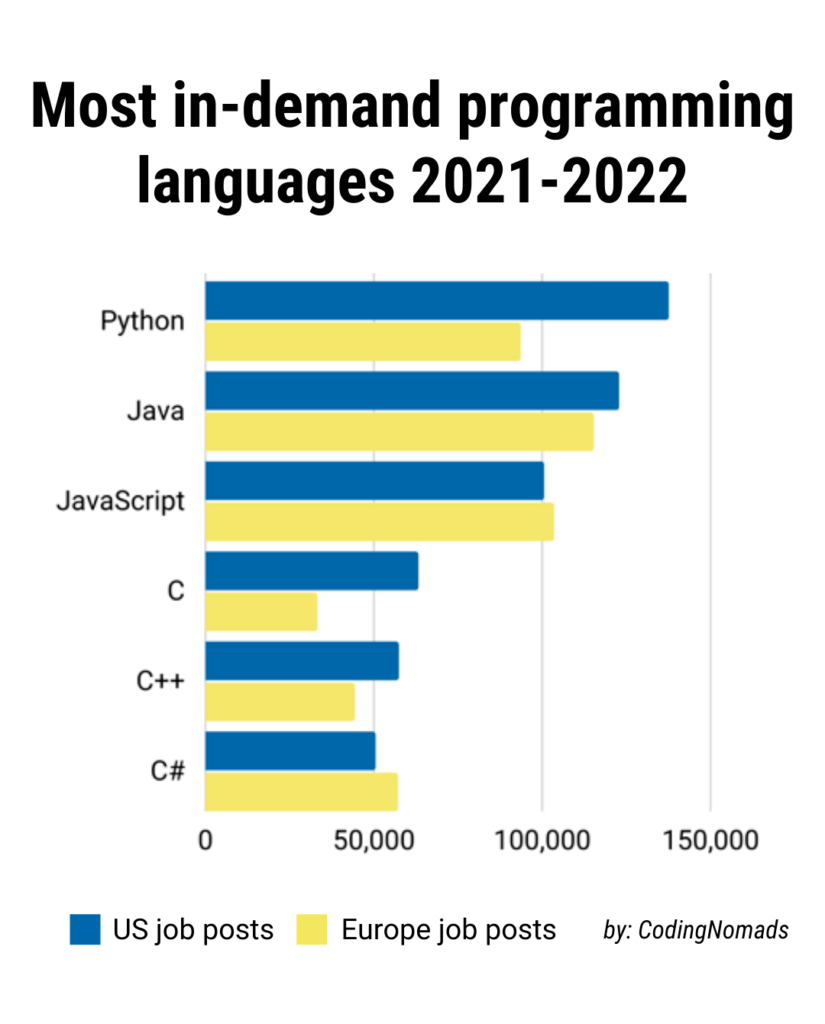
This image is property of www.elluminatiinc.com.
9. PHP
9.1 Overview
PHP is a widely used server-side scripting language primarily designed for web development. It is known for its simplicity, ease of use, and extensive web application frameworks.
9.2 Advantages
PHP offers several advantages that make it a popular choice for web development:
- Simplicity: PHP’s syntax is straightforward and easy to understand, even for beginners, making it an excellent choice for rapid development.
- Large Community: PHP has a large and active community of developers, providing access to a wide range of resources, tutorials, and support.
- Extensive Ecosystem: PHP has a robust ecosystem of libraries and frameworks like Laravel and Symfony, which simplify web development and provide ready-made solutions to common problems.
- Platform Independence: PHP can run on various platforms and web servers, making it widely compatible.
9.3 Disadvantages
While PHP is popular, it also has some drawbacks:
- Lack of Strong Typing: PHP is a dynamically typed language, which means type-related errors are often discovered at runtime instead of compile time. This can lead to hard-to-find bugs.
- Performance: Compared to other server-side languages like Java or C#, PHP can be slower due to its interpretation process. However, PHP has made significant performance improvements in recent versions.
9.4 Use Cases
PHP is often used for the following use cases:
- Web Development: PHP is primarily used for web development, where it powers popular content management systems like WordPress, Drupal, and Joomla.
- Rapid Prototyping: PHP’s simplicity makes it an excellent choice for rapid prototyping and small to medium-sized web projects.
- Server-Side Scripting: PHP can handle server-side scripting tasks such as handling form data, interacting with databases, and generating dynamic web content.
14. Conclusion
Choosing the right programming language for software development can greatly impact the success of your project. In this article, we explored some of the most popular programming languages, including JavaScript, Python, Java, C++, C#, PHP, Swift, Ruby, Go, and TypeScript. We also discussed factors that influence language choice, such as the purpose of the software, performance requirements, community support, learning curve, availability of libraries, job market demand, and maintenance and scalability considerations.
Ultimately, the best programming language for your project depends on the specific requirements and constraints you have. Consider the strengths and weaknesses of each language discussed in this article, as well as your familiarity and expertise with a particular language. Keep in mind that languages like JavaScript and Python are versatile and widely adopted, while languages like C++ and Java offer low-level control and high performance. By carefully considering these factors, you can make an informed decision and choose the most suitable programming language for your software development needs.
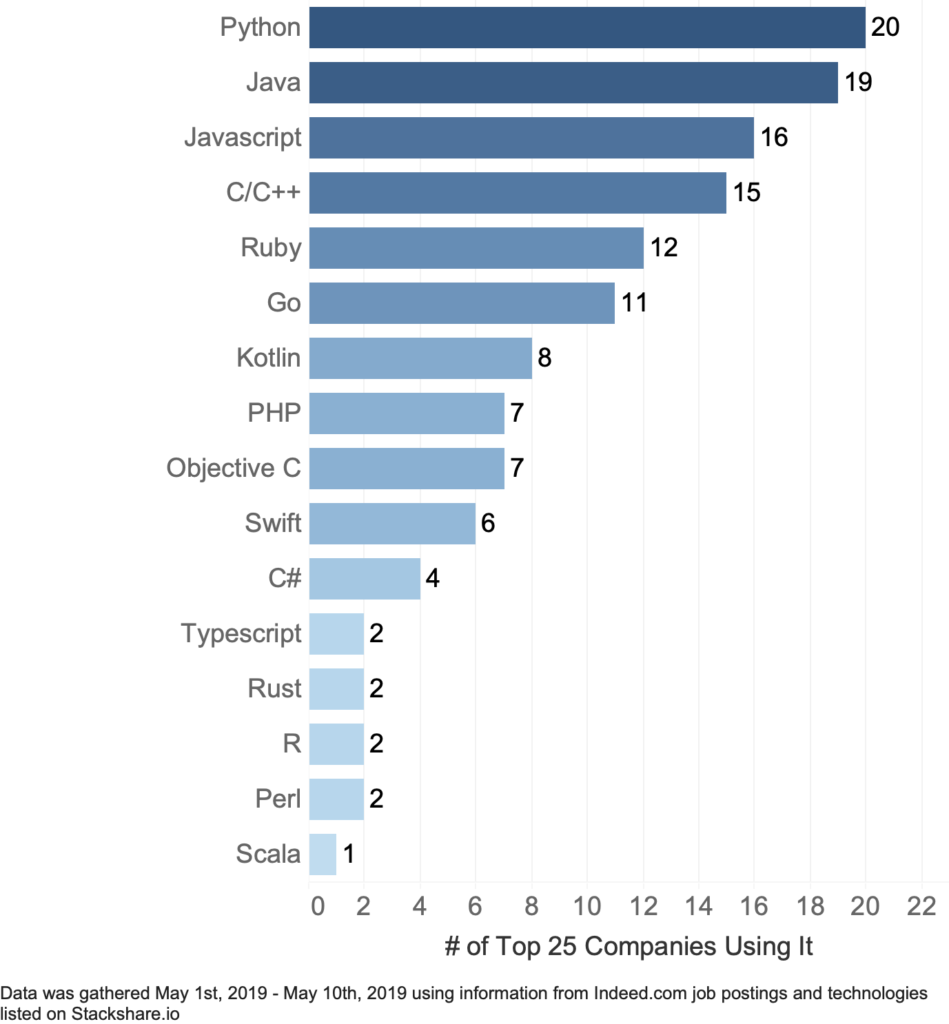
This image is property of www.codingdojo.com.
